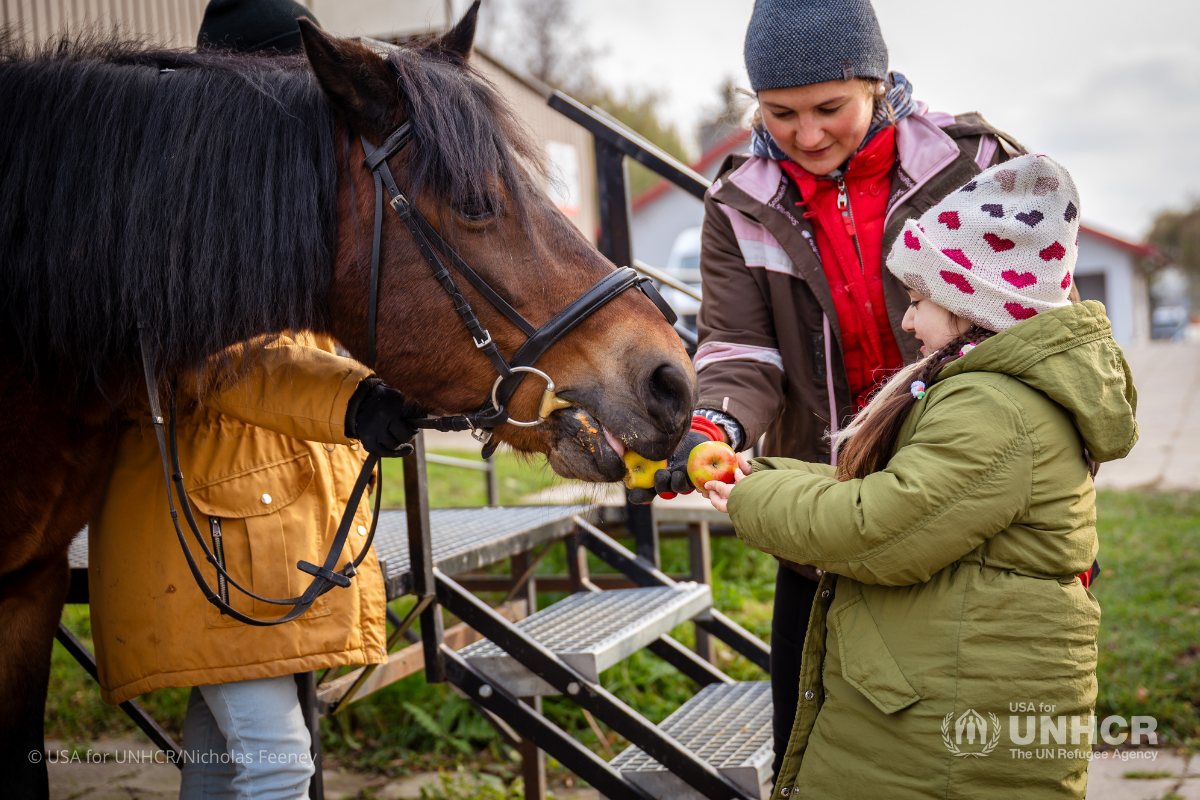Young couple’s love endures war in Sudan and escape to Ethiopia

Mussa Mohamed, 25, vividly remembers the first time he saw Jamila Ahmed, 22, at a wedding ceremony in Sudan’s capital, Khartoum. She walked onto the dance floor wearing a beautiful orange dress, his favorite color.
“The color of her clothes really attracted me … When I looked at her, I saw beauty,” Mussa said. She politely declined his request for a dance, but despite this initial setback he was smitten.
A few weeks later, they bumped into each other at another event where she was helping her hosts serve tea to guests. This time they got talking and exchanged contact details. After a year of getting to know each other, they fell in love and agreed that Mussa would ask Jamila’s parents for her hand in marriage.
“It was unbelievable,” he said. “I have been waiting for that day for a long time. I felt like the whole world was mine.”
Wedding plans dashed
They had planned a joyful wedding party in April last year, but just before their big day Khartoum erupted into flames as fighting broke out between the Sudanese army and the Rapid Support Forces.
They resolved to flee Khartoum together but, defying the chaos all around them, they organized a hasty ceremony with close family members to formalize their union.
Unable to join Mussa’s family in Darfur due to safety concerns, they decided to head for Ethiopia where his elder brother had been living as a refugee. Staying with Jamila’s family in a small village near Omdurman, a city on the opposite bank of the Nile from Khartoum, was also too risky.
They first headed to Damazine, in Blue Nile State, before embarking on another treacherous journey across the border.
Her brother was injured during the fighting, but the rest of the family are safe for now. “I am homesick, I think about my family back home … but this is our fate and the will of God, and we have to accept it,” Jamila said.
Mussa and Jamila are among nearly eight million people forced to flee their homes by the devastating violence which has wreaked havoc in Sudan for the past ten months. More than 1.6 million refugees and returnees have fled across borders to Chad, South Sudan, Central African Republic, Egypt and Ethiopia, and over 6.1 million people have been newly displaced inside the country.
Mussa and Jamila were among the initial group of about 50,000 refugees and asylum-seekers who entered Ethiopia following the outbreak of conflict. They first settled in Kurmuk transit center near the border before UNHCR, the UN Refugee Agency, relocated them to the existing Sherkole refugee camp about 50 kilometers away.
“It is good here because I stay at my place. At the [transit center], we used to live with four people under one tent…. [Here], there is no cold, there are no problems,” Mussa said.
Finding their feet
Mussa is not used to just “sitting idle”. He used to run a shop back in Khartoum while studying part-time at the Sudan University of Science and Technology.
Determined to rebuild his life, he opened a small shop selling sandals and food items in the camp using his savings and support from his elder brother, who welcomed the couple to the refugee camp.

Sitting in front of his shop at the heart of the camp’s main market, Mussa cleans a pile of plastic shoes in a basin of foamy water before hanging them for sale. “For me, if I have money, I feel free,” he said. “I feel I have solutions to my problems. I encourage refugees to start their own businesses because what aid agencies give lasts just for weeks.”
UNHCR is working with the Government of Ethiopia and partners on a new settlement to accommodate recent arrivals and support livelihoods and economic inclusion for refugees. However, Ethiopia is already hosting nearly one million refugees – in addition to 3.5 million internally displaced people –and resources are already overstretched. UNHCR is requesting $426 million to provide protection and life-saving assistance this year.
Staying positive
At midday, Mussa leaves the shop and goes to check on his wife in their mud-walled house, about 10 minutes’ walk from the market. Jamila has decorated the walls of their bedroom by plastering large hearts across the walls in orange-colored clay.
Despite the tragic circumstances surrounding their wedding, Jamila says the decoration reflects her feelings towards Mussa and her hopes and plans for their life together. “[The painting] reminds me of the love I have for my husband. I am happy to be with the person I love [and] we wish for a bright future for our children.”
Originally reported by UNHCR, the UN Refugee Agency.


